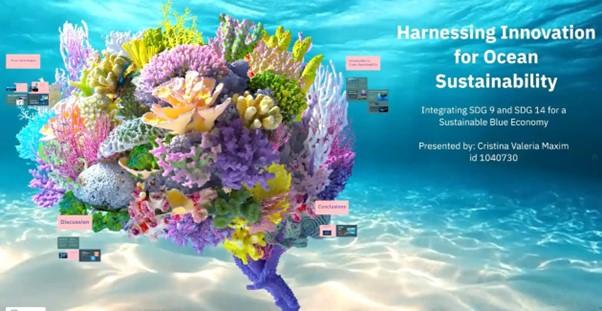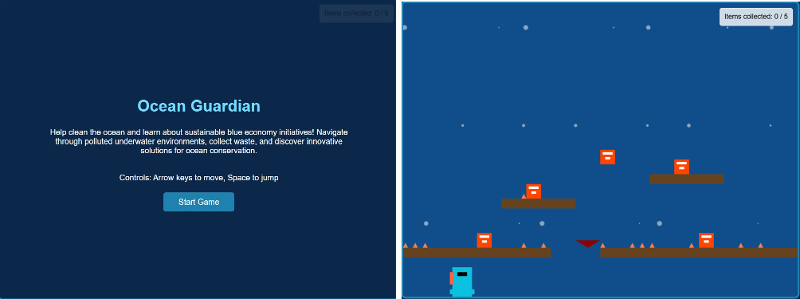Harnessing Innovation for Ocean Sustainability: A Student discussion of SDG 9 and SDG 14
My name is Cristina Valeria Maxim, and I am pursuing a Bachelor's degree in Business and
Management (University of Turin Italy). My contribution to the course on the New Horizons of Administrative Law, co-developed with the help of Margherita Poto and Giuliana Panieri has resulted in a project that reveals the synergies between SDG 9 (Industry, Innovation, and Infrastructure) and SDG 14 (Life Below Water). My project was guided by a
passion for sustainability and a belief that technology can drive ocean conservation as well as
economic resilience. This project, Harnessing Innovation for Ocean Sustainability, is an educational and
research program with the objective of highlighting how technological and infrastructural
innovation can serve as drivers of ocean conservation and establishing a sustainable blue
economy. The project was developed considering two phases:
Research Phase: I researched extensively the new maritime technologies, e.g., satellite ocean
monitoring systems, ocean IoT, green port facilities, and marine plastic pollution
technologies. Based on an analysis of these technologies, I assessed the possible
environmental impact of such innovations, their economic feasibility, and potential to achieve
the dual goals of SDG 9 and SDG 14.

Engagement Phase: To make complex ideas into simple-to-understand formats, in addition to my essay I created a Prezi presentation with a voiceover to resemble YouTube educational videos and a prototype of an educational game. This interactive aspect was meant for young audiences, generating early awareness and interest in ocean innovation and sustainability.

Being a very initial prototype made with simple technological capabilities, a more developed version of the game introduces players to the latest ocean-related innovations and dangers in a fun, interactive manner through a platformer-type game. Each level of the game is a new innovation or ocean danger, blending entertainment and environmental education.
I am convinced that engaging early is the secret to educating a generation of not just environmentally conscious but solution-oriented individuals. By introducing middle school and high school students to cutting-edge subject matter such as the blue economy, pollution prevention, and green infrastructure in an interesting and intuitive way, the game is converted into a successful science communication platform.
To foster inclusivity and reach, it would also include adaptations of the game that serve diverse accessibility needs. These include editions with audio narration for visually impaired learners, high-contrast mode for learners with visual processing challenges, and simplified gameplay for those with cognitive impairments. Offline versions of the game could also be developed by turning it into a trivia focused game. The goal is to make ocean education not only informational and inspirational, but also accessible to all learners, regardless of background or ability.
The general purpose of Harnessing Innovation for Ocean Sustainability is to inspire a new way of thinking about the ocean—not just as a place of environmental concern but as a field of potentiality where innovation, governance, and education intersect.
***
This post can be cited as: Cristina Valeria M. "Harnessing Innovation for Ocean Sustainability: A Student Discussion of SDG 9 and SDG 14", April 13, 2025.